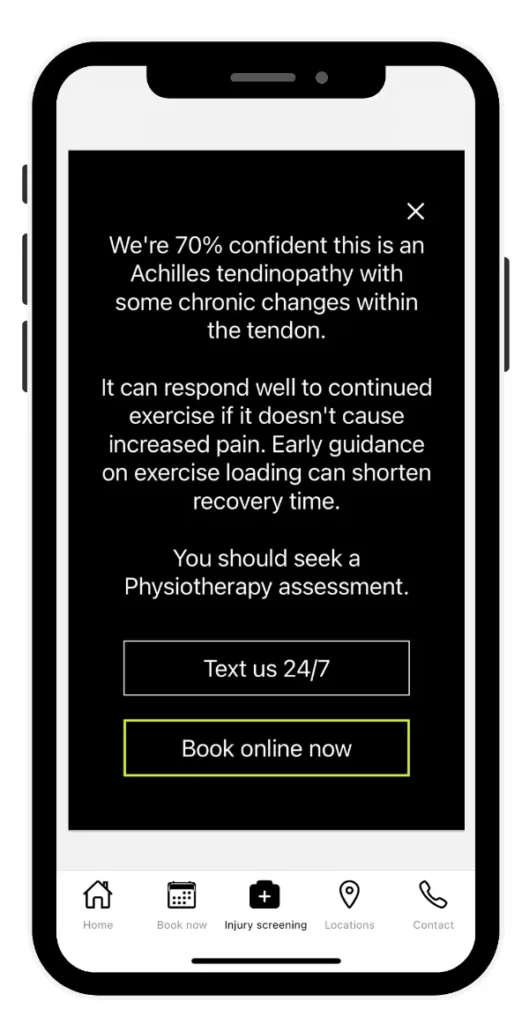Kids are so active these days that it seems like they’re always carrying a niggle or two. That makes it difficult to know which niggles will be gone in a day and which ones will lead to an injury and time away from sport.
One injury to highlight is known as a Pars Defect, a common cause of adolescent lower back pain. A Pars Defect is a stress fracture of the lower back. This injury affects around 20-30% of cricket and rugby players and causes about 50% of all lower back pain episodes in teenagers. In short, you should always be suspicious of this injury in active teens with lower back pain.
It progresses along a continuum, rather than happening suddenly, and the good news is that if it’s spotted early enough, the recovery time is quite short.

Need a diagnosis today?
Did you know that Bioathletic has developed a custom app?
- It thinks like a Physio
- It gives you an instant provisional diagnosis and advice
- It’s completely FREE!
It’s available now in Apple app store and Google Play store
Let’s briefly go through why this injury occurs, how you can detect it early and what can be done about it.
What is a Pars Defect?
A Pars Defect is a bony injury in the lower back where a small section of bone is subject to too much loading, causing a bone stress reaction and eventually, a bone stress fracture. Even though this last stage is a spinal fracture, it doesn’t cause any instability or danger to the spinal cord but it often results in 3 to 6 months away from sport. And for an active teen, that can feel like a lifetime.
The localised loading that causes Pars Defects is typically seen in any activity requiring the athlete to bend backwards and slightly to one side. This happens in cricket (with a fast bowling action), in sprinting (as the back arches at full pace) and in sports like gymnastics.
A Pars Defect begins as a little bit of lower back pain after playing or training. This is when a tiny bone reaction is occurring and it often settles within hours.
If the pressure on that area continues, the bone develops a reaction commonly referred to as a “bone bruise”. This can take up to 24 hours to settle after sport and can cause reasonable discomfort.
If the loading continues to that same area, eventually the bone bruise causes bone breakdown and a small crack develops. At this stage, any activity involving the back arching causes considerable pain and an ache that can last days after activity.

How to spot a Pars Defect
With each of these stages, the recovery time becomes exponentially longer. Put another way, if you spot it in the earliest phase then the recovery time is only a week or two.
As mentioned above, you should be suspicious of this injury if your teenager develops lower back pain after sport. As these injuries are more common in males and around the age of 14-17 years, your suspicion is heightened in that demographic.
If the first episode of pain settles in under 24 hours AND doesn’t happen again, you can just continue to monitor. One important note though – anti-inflammatories can completely relieve bone stress pain. So be careful with accidentally masking this injury with Nurofen, Advil or Voltaren in the early days as the bone breakdown will only progress faster.
If it lasts longer than 24 hours, or it happens again with sport, it’s time to call on your trusty Physio to diagnose the cause.
Remembering that the recovery time gets progressively longer as the injury builds, an early opinion is warranted.
Rehab planning
Depending on the phase of injury, rehab plans can include temporarily modified training sessions, strength training and other gym rehab. More advanced injuries may need time away from running and sport, but hopefully these injuries are detected before that occurs.
So the take home message here is to be on the lookout for this injury and be very wary of any teenage lower back pain that isn’t settling quickly.
Written by
Tim O’Grady
Physiotherapist
Tim is a Physiotherapist who specialises in football/Rugby and golfing injuries. Tim doesn’t believe that rest will make you a better athlete and he focuses on performance-based rehab methods. Tim is also qualified in golf biomechanics and injuries.




